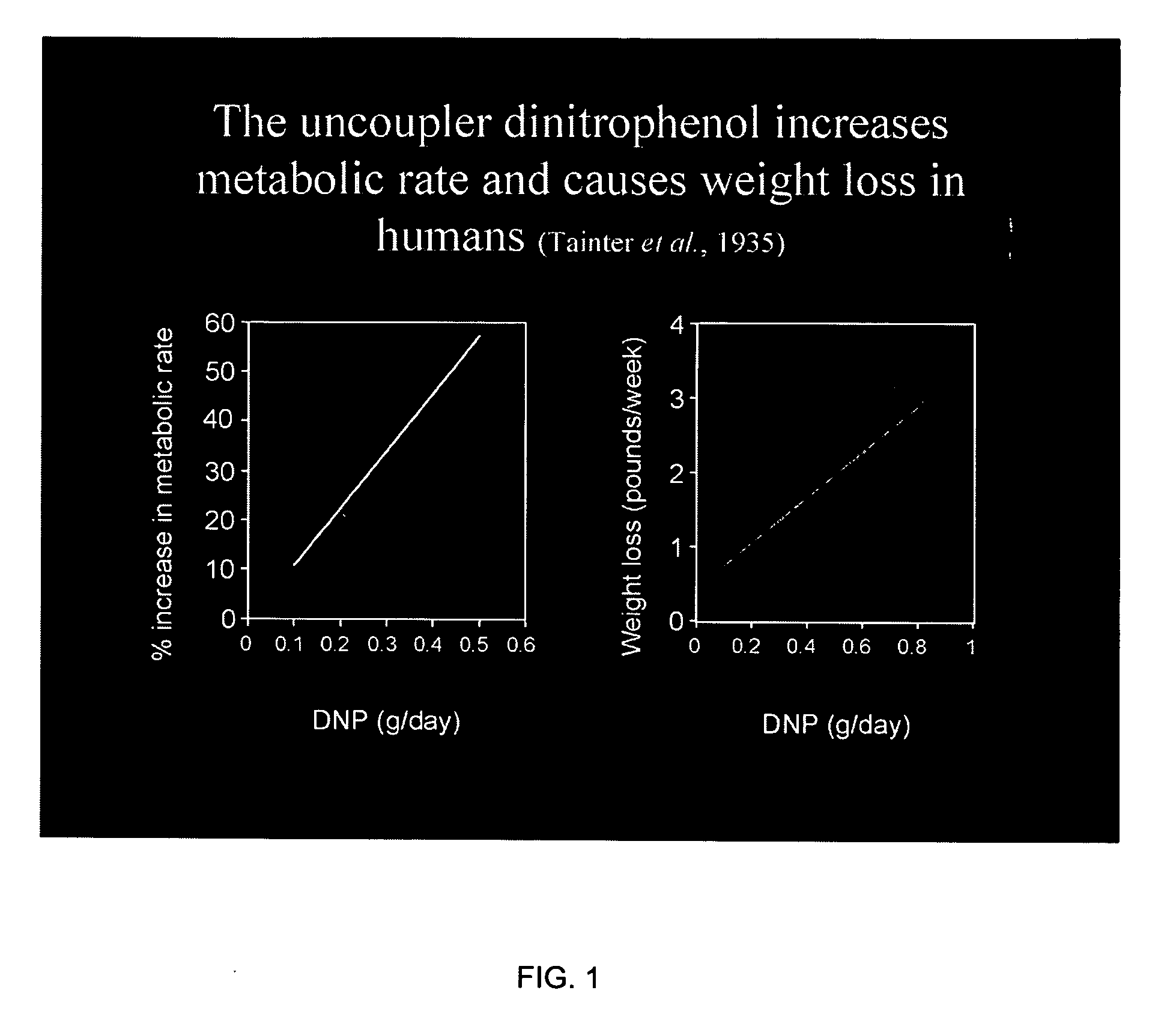Nanotubes as mitochondrial uncouplers
a technology of mitochondrial uncouplers and nanotubes, which is applied in the field of nanotubes as mitochondrial uncouplers, can solve the problems of difficult control and readily toxic chemical uncouplers, and achieve the effect of safe uncoupling of mitochondrial uncoupling
- Summary
- Abstract
- Description
- Claims
- Application Information
AI Technical Summary
Benefits of technology
Problems solved by technology
Method used
Image
Examples
example 1
Preparation of Nanotubes by Template Method
[0124]To prepare nanotubes using the template method, polycarbonate track etched membrane were immerse in methanol for 5 minutes. All of the methanol was drained off and then the membrane was immersed in a solution comprising 0.025 M SnCl2 and 0.07 M trifluoroacetic acid. Both of these chemicals were added in equal volumes. The membrane was kept in the SnCl2 and trifluoroacetic acid solution for 45 minutes. The solution was drained off and the membrane was immersed in methanol for two consecutive times, each for 2.5 minutes. The immersion of the membrane in methanol two consecutive times was done to remove any residual SnCl2 or trifluoroacetic acid. The membrane was then immersed in an aqueous ammonical AgNO3 solution for 5 minutes.
[0125]Next, the membrane was placed in a solution containing equal volumes of the following: 0.127 M of Na2SO3, 0.025 M of NaHCO3, and 0.625 M of HCOOH and a commercial gold plating solution Na3Au(SO3)2 (diluted ...
example 2
Preparation of Nanotubes using Histidine
[0132]The nanotubes were prepared using the method set forth in Example 1. Then the plated membranes were placed in a solution of histidine, and left in the solution for 24 hours, to allow the histidine to coat the inner walls of the nanotubes plated in the membranes. The coated membranes were removed and placed in CH2Cl2 and sonicated, to dissolve the membrane. PEG was added to the resultant solution to release the nanotubes into the PEG solution. The PEG solution was sonicated so that the nanotubes settled at the bottom. The PEG was removed so that the nanotubes could be collected. 70V EtOH was added, allowing the tubes to be suspended in a sterile medium. The solution was drained off after centrifuging, and then 70V EtOH was added to it.
example 3
Preparation of Gold Nanotubes using Template Membranes
[0133]Materials used in this example included Polycarbonate Track Etched membranes (from Sterlitech™ Corporation); SnCl2, ammonium hydroxide, tri-flouroacetic acid from Sigma Aldrich; L-Histidine, Stannous Chloride Anhydrous and Silver Nitride from Fluka; Sodium Sulfite Anhydrous and Sodium Bicarbonate from Mallinckrodt; Ormerse SO Part B™, commercial gold solution.
[0134]The procedure for the preparation of the gold nanotubes included immersing the polycarbonate track etched membrane in methanol for about 5 minutes. Substantially all of the methanol was drained off, and then the membrane was immersed in a solution which is 0.025 M in SnCl2, i.e., 0.1896 gm for 20 mL of water and 0.07M in trifluoroacetic acid (ie;, 104.33 μL for 20 mL of water. Both the SnCl2 and trifluoroacetic acid were added in equal volumetric proportions. The membrane was kept immersed in the SnCl2 and trifluoroacetic acid solution for about 45 minutes. Then ...
PUM
| Property | Measurement | Unit |
|---|---|---|
| length | aaaaa | aaaaa |
| length | aaaaa | aaaaa |
| membrane potential | aaaaa | aaaaa |
Abstract
Description
Claims
Application Information
 Login to View More
Login to View More - R&D
- Intellectual Property
- Life Sciences
- Materials
- Tech Scout
- Unparalleled Data Quality
- Higher Quality Content
- 60% Fewer Hallucinations
Browse by: Latest US Patents, China's latest patents, Technical Efficacy Thesaurus, Application Domain, Technology Topic, Popular Technical Reports.
© 2025 PatSnap. All rights reserved.Legal|Privacy policy|Modern Slavery Act Transparency Statement|Sitemap|About US| Contact US: help@patsnap.com



